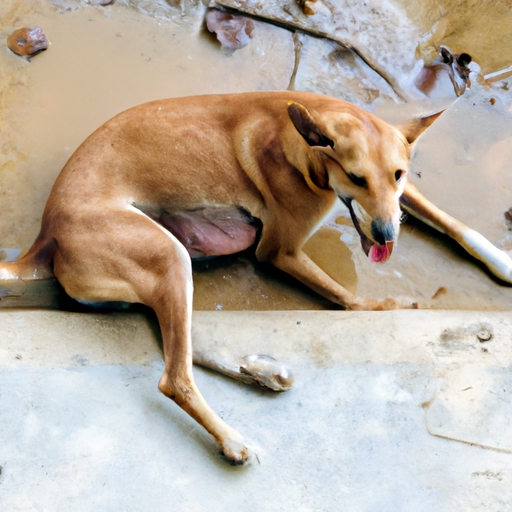Understanding the Canine Pregnancy
As a caregiver, you are the guardian, the protector, the lifeline of your beloved pet. You’ve watched as your dog’s belly has grown, the signs of her impending motherhood apparent. But what’s next? What should you expect when your dog is expecting?
Canine pregnancy usually lasts between 58 and 68 days. As your dog nears the end of her gestation period, you may notice several signs indicating that she is about to go into labor:
- Nesting behavior: This might include digging, pacing, or rearranging her bedding.
- Loss of appetite
- Drop in body temperature
Recognizing the Water Breaking
Now, let’s focus on the main event: your dog’s water breaking. You may be wondering, “What exactly does this look like?”
Unlike in human pregnancies, a dog’s water breaking is not always as dramatic or noticeable. It can be a subtle event, often resembling a slow leak rather than a sudden gush of water. Below are the changes you might observe:
- Wetness around your dog’s rear end
- Dampness on their bedding
- A clear or straw-colored fluid
Ensuring a Safe and Comfortable Delivery
Your role as a caregiver now evolves to become a reassuring presence for your dog during this crucial time. Here are some tips:
- Prepare a whelping box: This should be a comfortable space where your dog can give birth and care for her puppies post-delivery.
- Monitor your dog: Keep an eye on her without being intrusive. Too much interference can cause stress.
- Call your vet: As soon as you notice signs of labor, notify your vet. They can provide specific advice based on your dog’s health history.
Potential Complications
Like any childbirth, there can be complications. Your dog might experience prolonged labor or distress. To help you navigate any potential issues, here’s a handy table:
| Signs of Complication | What to Do |
|---|---|
| Labor lasting over 2 hours with no puppy | Call your vet |
| More than an hour between puppies | Call your vet |
| Obvious distress or pain | Call your vet |
Frequently Asked Questions
Q: Can I help my dog during delivery?
A: Unless your vet instructs otherwise, it’s best to let the process happen naturally. Be there for support, but refrain from interfering.
Q: How many puppies can a dog have?
A: This varies by breed, age, and health. Small breeds usually have 1-5 puppies, while larger breeds can have up to 12.
Q: What should I do after the puppies are born?
A: Make sure the puppies are nursing and your dog is comfortable. Contact your vet for a post-birth check-up.
Q: Can a dog’s water break without her going into labor?
A: This is unusual. If you notice any signs of water breaking but no other signs of labor, contact your vet immediately.
Remember, everyone’s experience can vary. What’s most important is ensuring the health and safety of your dog and her puppies. As a caregiver, your calm and steady presence can make all the difference.



